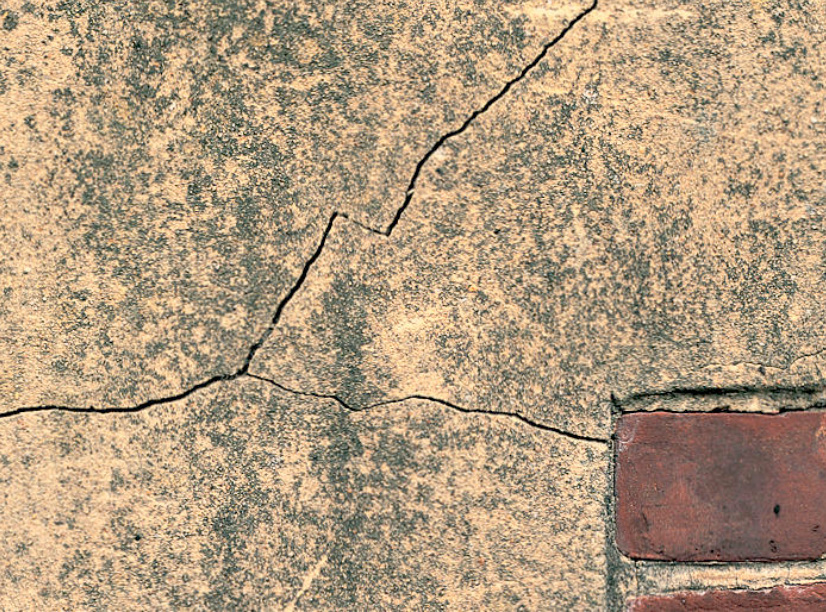
Sometimes the brickwork is covered from the outside with cement-based plaster, both with a smooth texture and with a stone texture. Such a coating performs not only a decorative, but also a waterproofing function.
Cement plaster is exposed to dampness and frost, which can cause it to crack, swell and stain. Before you begin to restore the plaster coating, correct all defects and flaws, and also clean the surface from dirt, organic formations and staining material — then the coating will be durable.
Sealing cracks in plaster
Facade paint with powder filler will close small cracks, but large cracks should be cleaned with a chisel, moistened and covered flush with the surface with cement putty.
Fill the largest cracks with a solution of 1 part cement, 2 parts lime and 9 parts sand (1: 2: 9) with the addition of glue for better adhesion to the surface.
Crack reinforcement
To prevent a crack in the plaster from opening again, it can be reinforced with a polyester membrane (mesh) embedded in a special primer that is sold for use with this membrane.
1. Clean and moisten the crack.
2. Fill it just above the surface level with a solution of 1 part cement and 4 parts sand.
3. After the solution has solidified, clean it flush with the surface.
4. When the solution is fully grasped, brush it liberally with a primer so that it goes at least 100 mm on both sides of the crack.
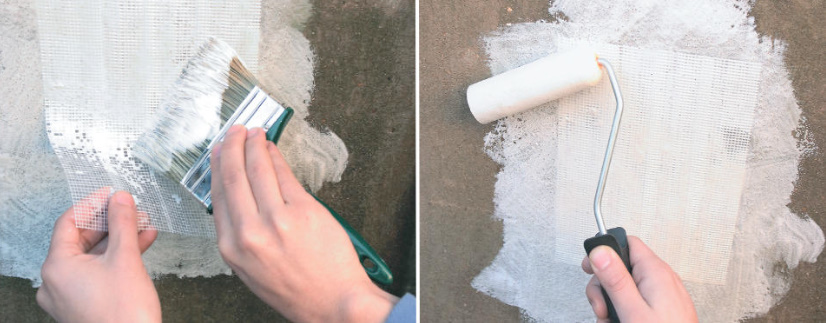
5. Press the membrane strips into the primer (sold together with the primer), while acting with a brush both with strokes and with facing (see photo on the left).
6. While the primer is not dry, roll the edges of the strip with a polyurethane foam roller (see photo on the right), sinking the gasket into the primer.
7. After 24 hours, apply a second coat of primer and roll with a roller.
8. After drying the primer, make a textured coating.
Elimination of defects
The swelling of the plaster usually indicates that it is peeling off from the masonry.
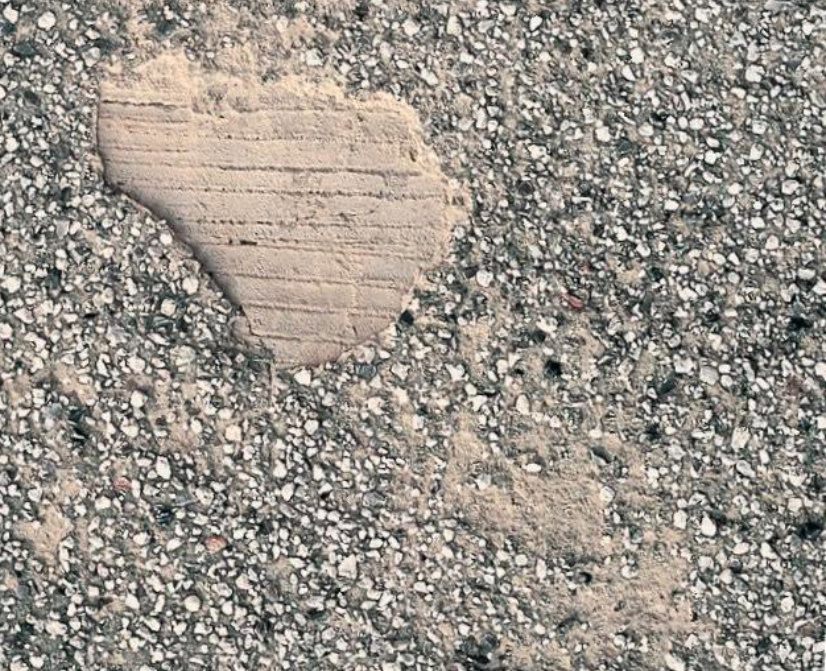
1. Gently tap the wall with a mallet to determine the boundaries of such areas, remove the detached material.
2. Using a chisel and a hammer, cut inside the edges of each defective area with the exception of its lower edge.
3. Clean the fragments with a brush, then smear the surface with a layer of liquid glue.
4. When the glue becomes sticky, apply a 12-millimeter layer of mortar prepared in a ratio of 1: 2: 9 to the cleaned area with a trowel.
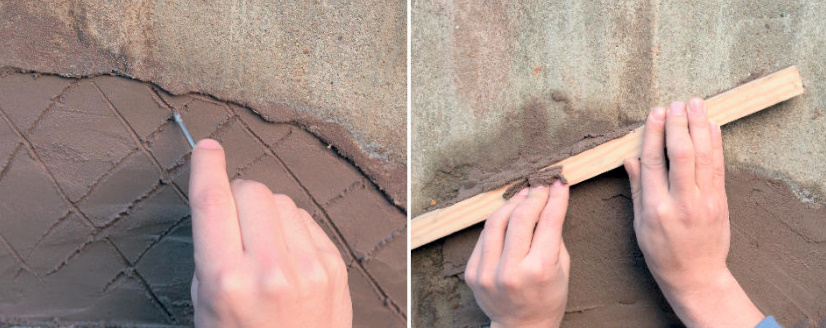
5. When it grabs, make a cross notch (see photo on the left) for the next layer.
6. The next day, fill the area with a thinner solution with a ratio of 1: 3: 12 flush with the surface and level it with a rail of sufficient size to cover the entire patch. Work from the bottom up, removing the excess solution in a zigzag motion (see photo on the right).
7. Align the surface with circular movements of a wooden ironer.
Repair of “stone” plaster
“Stone” plaster is a thin layer of plaster with crushed stone chips applied over the base layer to give the wall additional weather resistance.
1. Cut down the straggling areas to a solid foundation and treat with a stabilizing compound. If necessary, restore the bottom layer with a notch (see the item on eliminating defects). It is difficult to match the color of natural gravel, so it is usually better to paint the repaired wall.
2. To collect and reuse the old filler that crumbles when cleaning defective areas, spread a plastic film.
3. Prepare the solution for the top layer by adding a little liquid glue.
4. Apply the solution as indicated above, and while it is still wet, throw the washed gravel with a scoop.
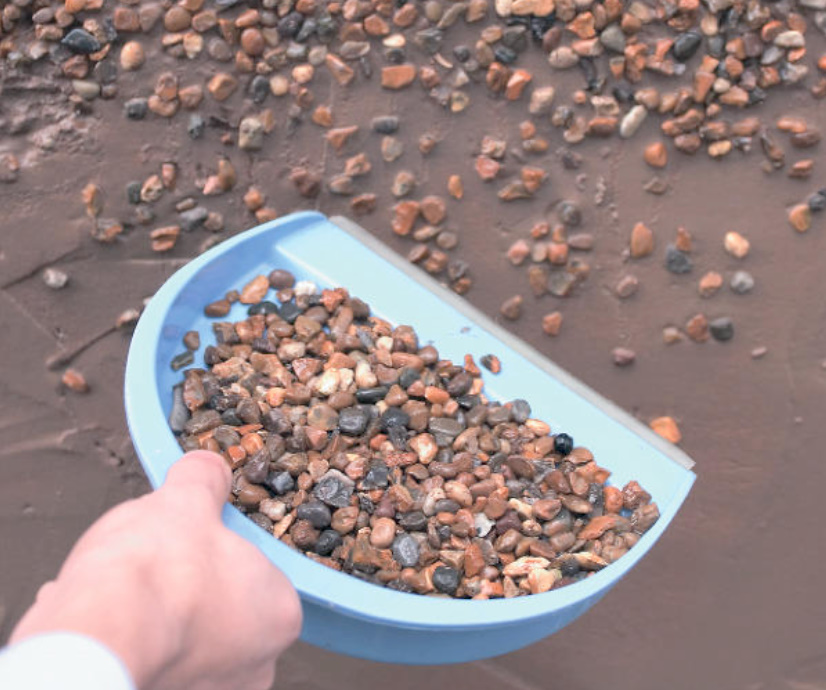
5. Repeat until a uniform coating is created, and then level the gravel with light strokes of a wooden grater.




Leave a Reply